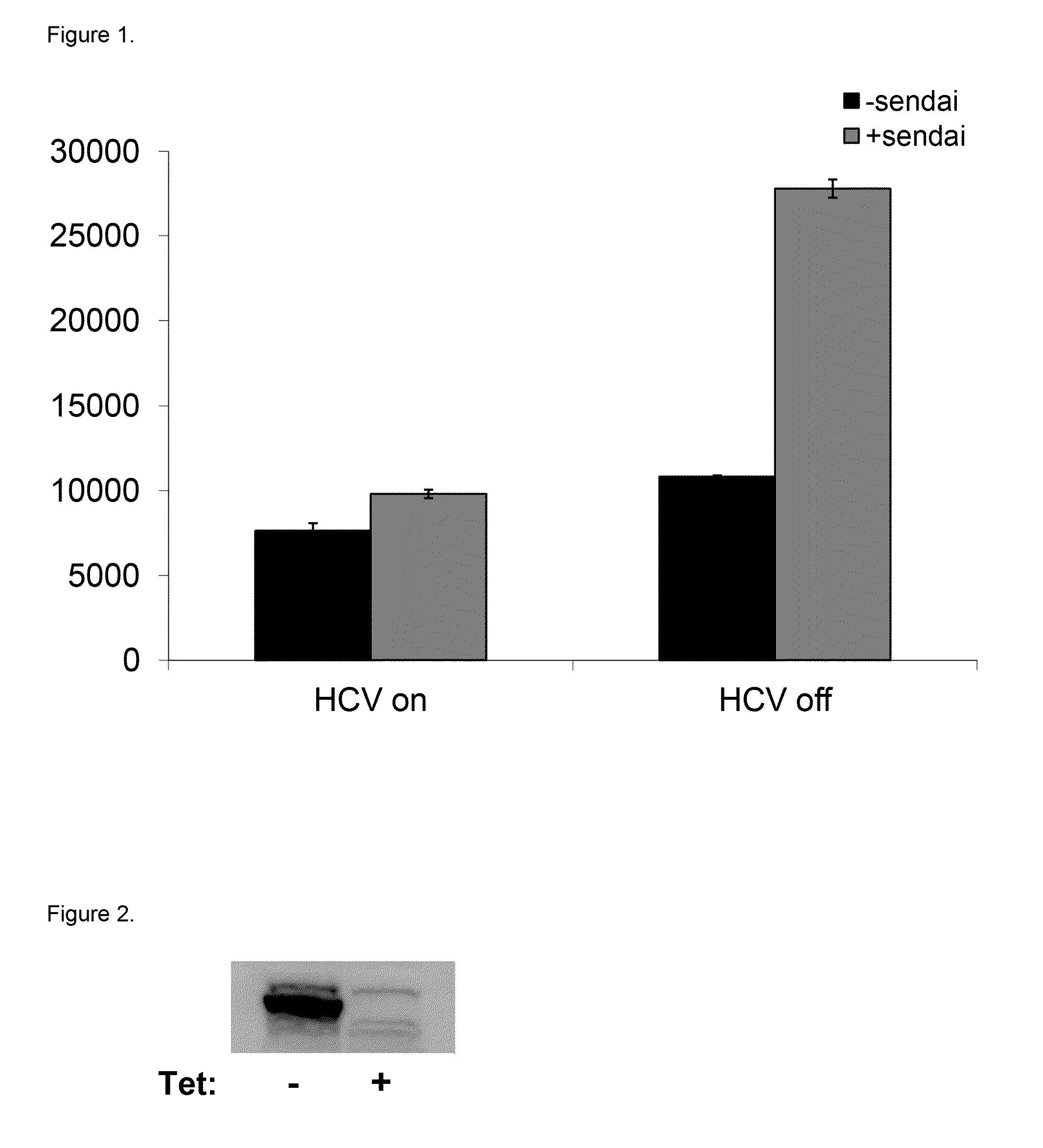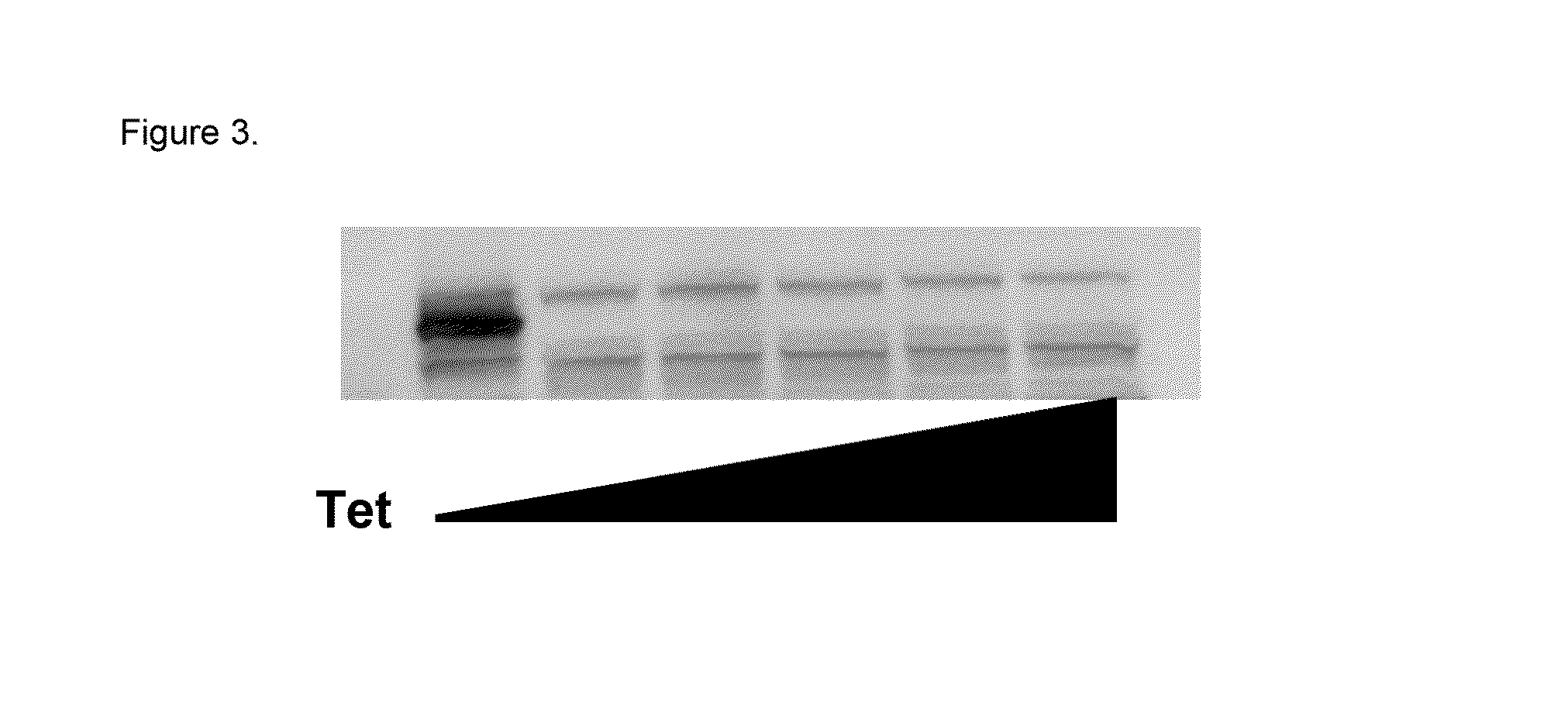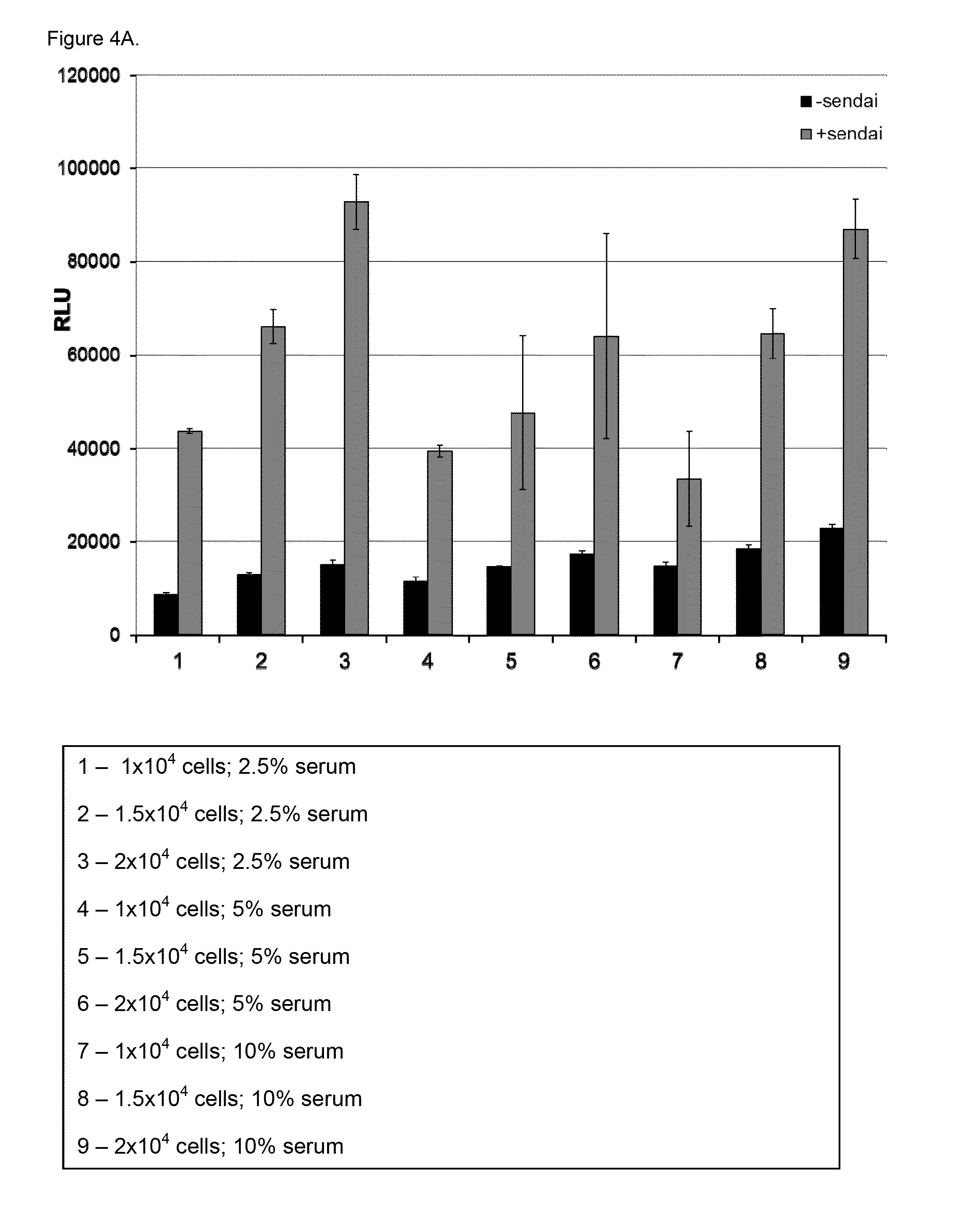Methods and cells for identifying RIG-I pathway regulators
a technology of rigi pathway and rigi inhibitor, which is applied in the field of methods and cells for identifying rigi pathway regulators, can solve the problems of large public health problems, limited number of antiviral drugs, and many poorly effective, and achieve the effect of reducing downregulation and effective strategies
- Summary
- Abstract
- Description
- Claims
- Application Information
AI Technical Summary
Benefits of technology
Problems solved by technology
Method used
Image
Examples
example 1
1A. Development of an HCV Viral Countermeasures Screening Cell Line to Identify RIG-I Agonists with Antiviral Properties
[0110]Reporter U2OS cell lines were developed to stably express (i) the HCV countermeasure NS3 / 4A protease under control of tetracycline and (ii) Firefly luciferase utilizing the IFN-β promoter. The NS3 / 4A protease is expressed under the control of a Tetracycline-repressive promoter (i.e., it is not expressed in the presence of Tetracycline). These cell lines were responsive to stimuli that modulate the RIG-I pathway including, without limitation, Sendai virus infection as well as IFN treatment and were utilized to identify RIG-I modulators through high throughput screening (HTS) of a small molecule library. Induction of reporter cell lines was optimized for cell growth and assay conditions used in the HTS, in order to obtain the most sensitive and reproducible results. Additionally, a control cell line that expresses Renilla luciferase using the β-actin promoter w...
example 2
Biological Activity of Identified Compounds
2A. Dose-Dependent ISG54 Promoter Induction by Isoflavone Compounds without Effect on the Actin Promoter or Cell Growth
[0126]A compound referred to herein as “KIN101” was identified by the screening methods disclosed herein as a RIG-I modulator. Huh 7 cells stably expressing a luciferase cistron driven by the ISG54 promoter were treated with KIN101 for 18 hours and then analyzed for luciferase production. FIG. 5A shows a dose dependent increase in luciferase expression under control of the ISG54 promoter following exposure to KIN101.
[0127]Huh 7 cells expressing a luciferase construct driven by the actin promoter were treated with 10 uM of KIN101 and then analyzed for luciferase production. Negative control cells are treated with vehicle alone. KIN101 did not increase expression of luciferase under control of the actin promoter.
[0128]To assess a potential effect of KIN101 on cellular metabolism, Huh7 cells were grown for 48 hours with increa...
example 3
Antiviral Activity of Identified Compounds
[0135]To further characterize the breadth of antiviral activity of optimized molecules, cell culture infection models are used to analyze different HCV genotypes and influenza virus strains. In addition, optimized compounds are tested for activity against West Nile virus (WNV), an emerging public health concern. The studies include treating cells with compound 2-12 h. prior to infection or treating cells 8 h. after infection (see Table 6). Virus production and cellular ISG expression are assessed over a time course to analyze antiviral effects of representative compounds from lead structural classes. IFNβ treatment is used as a positive control.
[0136]Virus production is measured by focus-forming or plaque assay. Huh 7 cells are pre-treated with compound for 24 hours and infected with HCV2a at an MOI of 0.5 for 48 hours. HCV proteins are detected by immunofluorescent staining with viral-specific serum and foci normalized to negative control c...
PUM
| Property | Measurement | Unit |
|---|---|---|
| Real Time PCR | aaaaa | aaaaa |
| concentration | aaaaa | aaaaa |
| concentration | aaaaa | aaaaa |
Abstract
Description
Claims
Application Information
 Login to View More
Login to View More - R&D
- Intellectual Property
- Life Sciences
- Materials
- Tech Scout
- Unparalleled Data Quality
- Higher Quality Content
- 60% Fewer Hallucinations
Browse by: Latest US Patents, China's latest patents, Technical Efficacy Thesaurus, Application Domain, Technology Topic, Popular Technical Reports.
© 2025 PatSnap. All rights reserved.Legal|Privacy policy|Modern Slavery Act Transparency Statement|Sitemap|About US| Contact US: help@patsnap.com



